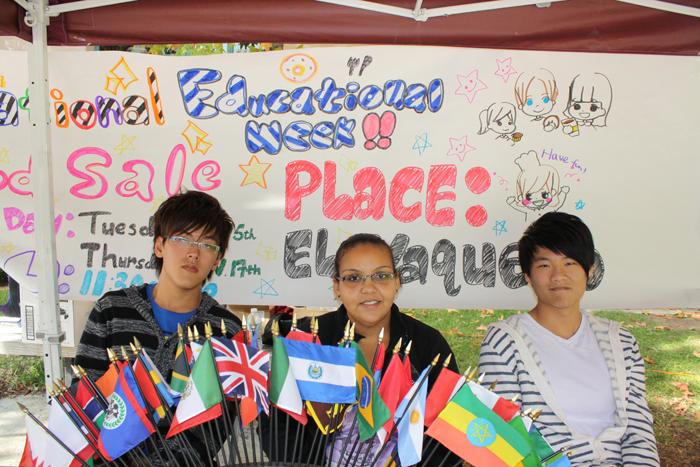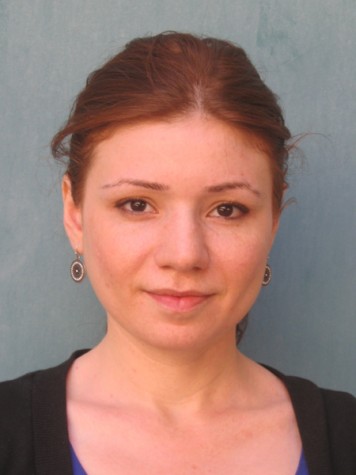Last week, the U.S. Departments of State and Education celebrated the 12th annual International Education Week. According to Connecting Our World, an organization that promotes international education, colleges and universities all over the world organized activities to celebrate the benefits cultural diversity brings to campuses.
Glendale College is one of the colleges with high international student population. In Fall 2009, Glendale College hosted 18,056 international students out of 26,159 enrollments.
Because of the big number of international students enrollment, Glendale College organizes a number of activities through the International Student Office, to help students with cultural transitions.
“We start with orientation to help students out and then all new students are required to take student development 103. In that class, they talk about all the different offices, student services, about culture or American education system,” said Anh Nguyen, senior coordinator in the International Student Office. “We are lucky to have academic counseling, activities, admissions, immigration counseling all under one office. Here we are all housed and work closely.”
One of the issues facing international students has been housing. After a number of complaints, the college was considering building dormitories, but the program is on hold and is still in the process of approval.
Despite this, international students continue to enroll, enriching the college’s ethnic makeup.
Yan Yan Cho, 19, public relations, from Hong Kong, finds her life as a college student here exciting. “When I studied in Hong Kong, all my friends were Chinese. But here, they are from different countries so I think its great. I feel happy that I experience something that I couldn’t experience in my country.”
Even though Cho was nervous when she came here first, she soon learned about the culture living with her host family. She also feels good to be given the opportunity to share her culture with others.
Cinthy de Cuba, 22, psychology, from Aruba, who has been here for a year has expressed her excitement to be able to study in a big country.
“My country is very small, so I actually enjoy big city life,” said Cuba. “It’s awesome. I got used to it very fast. I found my way easily by walking around and asking.”
Even though the education system is completely different to what many foreign students are used to, they find it gets easier by time.
“The credit system is totally different. And when I studied in my country, I only had to worry about the midterms and exams but here I have tests all the time,” said Anushik Malkhasyan, 21, political economics/economics. “English was my third language, so when I first came here, I didn’t understand a word. I could understand the written language, but when they talked, I didn’t understand a word.”
Often, international students find the education system challenging and different from what they are used to, so the language becomes a challenge. It can go beyond that when students have trouble understanding the class requirements and their professors.
“Not only the language but the culture was different, people were different and it was hard to find friends,” said Malkhasyan. “People don’t like long relationships, they are only friends for a week or a month but for me, friendship is forever.”
Many times professors are not aware of the special needs of the students and they require the same level of participation from their international students. However, sometimes foreign students need extra guidance in their homework, which is not given at times.
“Many professors never ask the students about their background or what country they come from. They require the same things like from local students. I found that I had to study more, work harder to keep my grades high and professors never know if you have any difficulties,” said Malkhasyan.
Some of other challenges that students go through is the tuition increase, which affect internationals as well because they pay more than local students.
International students also face enrollment issues. Many times, because of the immigration regulations, they arrive only 30 days before the enrollment dates and sometimes there are not enough classes for them to enroll, said Nguyen.
This is one of the hardships that internationals have to go through especially when the classes are being cut.
“They not only deal with the assessment testing, academic counseling, finding housing, immigration details,” said Nguyen. “They may not get the minimum 12-unit classes and when the classes fill up early, some of them get very discouraged. We had students drop out and go back home to change the place of study.”
International students have more challenges than locals, but despite these challenges they manage to stay and become bridges between the countries and cultures.
“I will encourage new foreign students not to give up and to continue because I think that this country encourages our efforts,” said Malkhasyan. “Whenever you work, you will not lose. Don’t be disappointed and keep working, you’ll get there.”
Even though international students face many challenges, they never regret coming to the U.S. “I love it. It’s a great campus, it’s safe, there is international diversity, there are a lot of people from many other countries. I enjoy it,” said Cuba.


